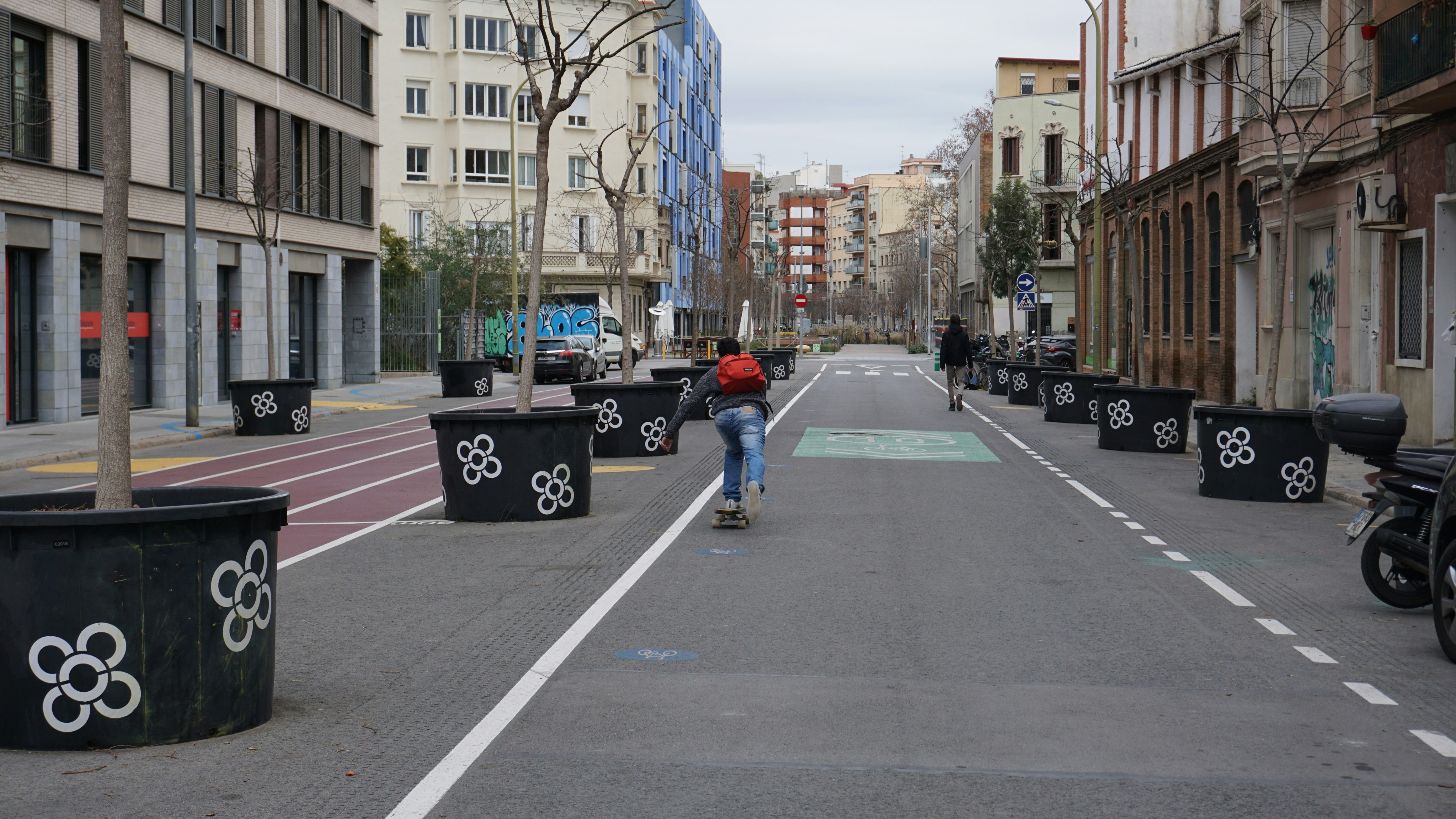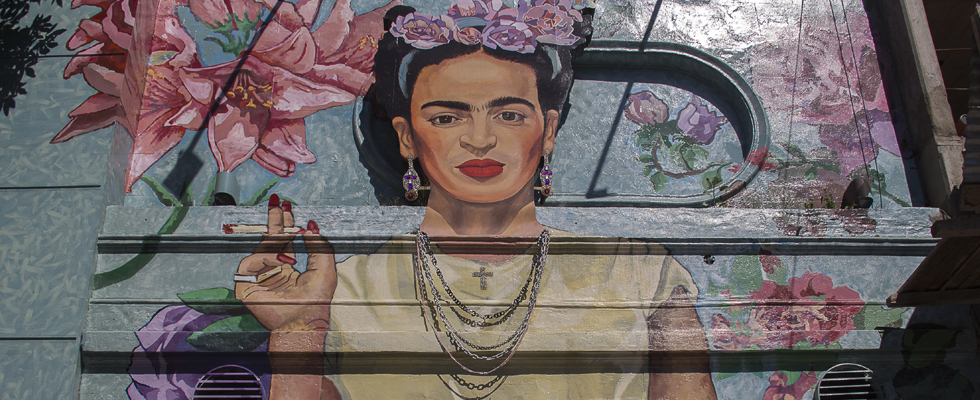“First life, then spaces, then buildings. The other way around never works.” – Jan Gehl
Introduction
Modern cities face numerous challenges: traffic congestion, lack of public spaces, declining walkability, and social inequality. Cities are constantly evolving, shaped by the needs, desires, and creativity of the people who live in them. But traditional urban planning often moves at a glacial pace, tied up in bureaucracy and long-term investments that can take years—sometimes decades—to materialize. Enter Tactical Urbanism, a fresh, grassroots-driven approach that flips the script on how cities change.
Instead of waiting for large-scale government projects, Tactical Urbanism relies on small, low-cost, and temporary interventions that make an immediate impact. These projects, whether it’s turning parking spaces into mini-parks, creating pop-up bike lanes, or painting murals on neglected walls, have the power to redefine urban spaces in real-time. They are about testing ideas, engaging communities, and proving that even the smallest interventions can have a ripple effect across an entire city.
Tactical Urbanism empowers residents, designers, and local governments to test ideas on a small scale before committing to permanent changes. It is about using temporary, flexible, and often DIY interventions to make cities more livable, people-friendly, and responsive to community needs.
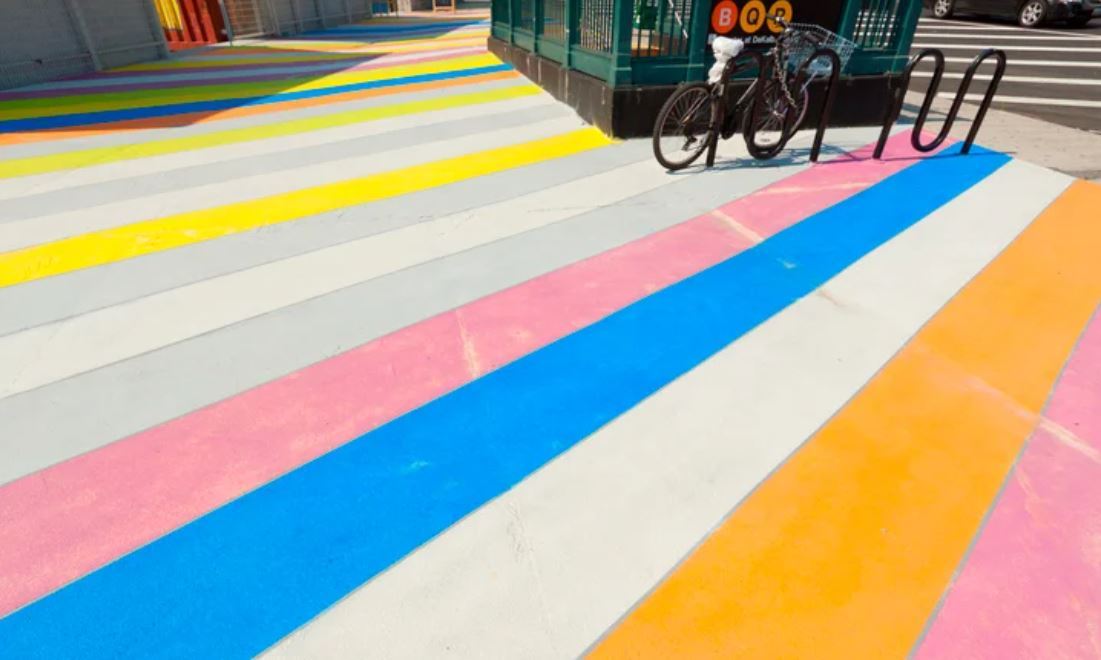
Tactical Urbanism (Source: onekeyresources.milwaukeetool.com)
Origins of Tactical Urbanism
The term Tactical Urbanism was popularized by Mike Lydon and the Street Plans Collaborative in the early 2010s, but the concept dates back much further. The core idea—small, grassroots urban interventions—has been used by urban activists and planners for decades.
-
1960s: Jane Jacobs advocated for bottom-up urbanism, emphasizing walkability, public spaces, and community involvement in shaping cities.
-
1980s: Danish architect Jan Gehl introduced the idea of "human-scale cities," prioritizing people over cars and public life over infrastructure.
-
2005: The Rebar art collective in San Francisco created the first PARK(ing) Day, where metered parking spaces were temporarily transformed into public mini-parks.
-
2011: Tactical Urbanism officially became a movement with the publication of Tactical Urbanism: Short-Term Action, Long-Term Change by Mike Lydon.
Today, Tactical Urbanism is embraced by citizens, urban designers, landscape architects, and city governments as a tool for testing and accelerating urban improvements.
What is Tactical Urbanism?
Tactical Urbanism is an approach to city-making that involves small-scale, temporary, and low-cost interventions to improve urban spaces. These projects often serve as prototypes, allowing stakeholders to test ideas before committing to expensive, long-term urban developments.
Tactical Urbanism (Source: Marek Lumi_unsplash)
A Quiet Revolution in Our Streets
Look around, and you’ll see Tactical Urbanism in action, even if you don’t recognize it by name. Consider New York City’s Times Square—once dominated by cars, but transformed into a vibrant pedestrian plaza with nothing more than paint, planters, and folding chairs in its early stages. What started as an experiment is now a permanent part of the city, proving that quick, low-cost changes can have lasting effects.
It’s not just happening in New York. Paris dramatically expanded its bike lanes during the COVID-19 pandemic, marking temporary cycling paths with paint and barriers. When people flocked to these new routes, the city realized the demand was real. Instead of removing them, officials made them permanent, reshaping mobility across the city.
Why Tactical Urbanism Works
The beauty of Tactical Urbanism lies in its speed, adaptability, and community-driven nature. Instead of waiting for years of urban planning meetings and budget approvals, people can take action—right now. It’s about testing ideas in the real world, seeing how people respond, and then adjusting accordingly.
One of the biggest strengths of this approach is that it puts communities at the heart of urban change. Residents, business owners, and local organizations are no longer passive observers; they become co-creators of their own neighborhoods. A dull, lifeless street can be turned into a lively gathering space simply by adding benches, greenery, and street art—all without millions of dollars or years of construction delays.

Pop-up bike lane - Maine, USA - (Source:Tactical Urbanism Guide)
The Power of Small-Scale Interventions
Tactical Urbanism thrives on practical, small-scale changes that can quickly improve urban life. In San Francisco, parking spots have been converted into tiny public parks called parklets, giving pedestrians a place to rest, chat, and enjoy the city. In cities like Buenos Aires and Mexico City, once-abandoned lots have been transformed into community gardens, bringing fresh produce and a renewed sense of connection to local neighborhoods.
Sometimes, the changes are as simple as painting a crosswalk to make an intersection safer, or as bold as closing streets to cars on weekends to create temporary pedestrian zones. The common thread? These interventions happen fast, with minimal resources, and with direct community involvement.
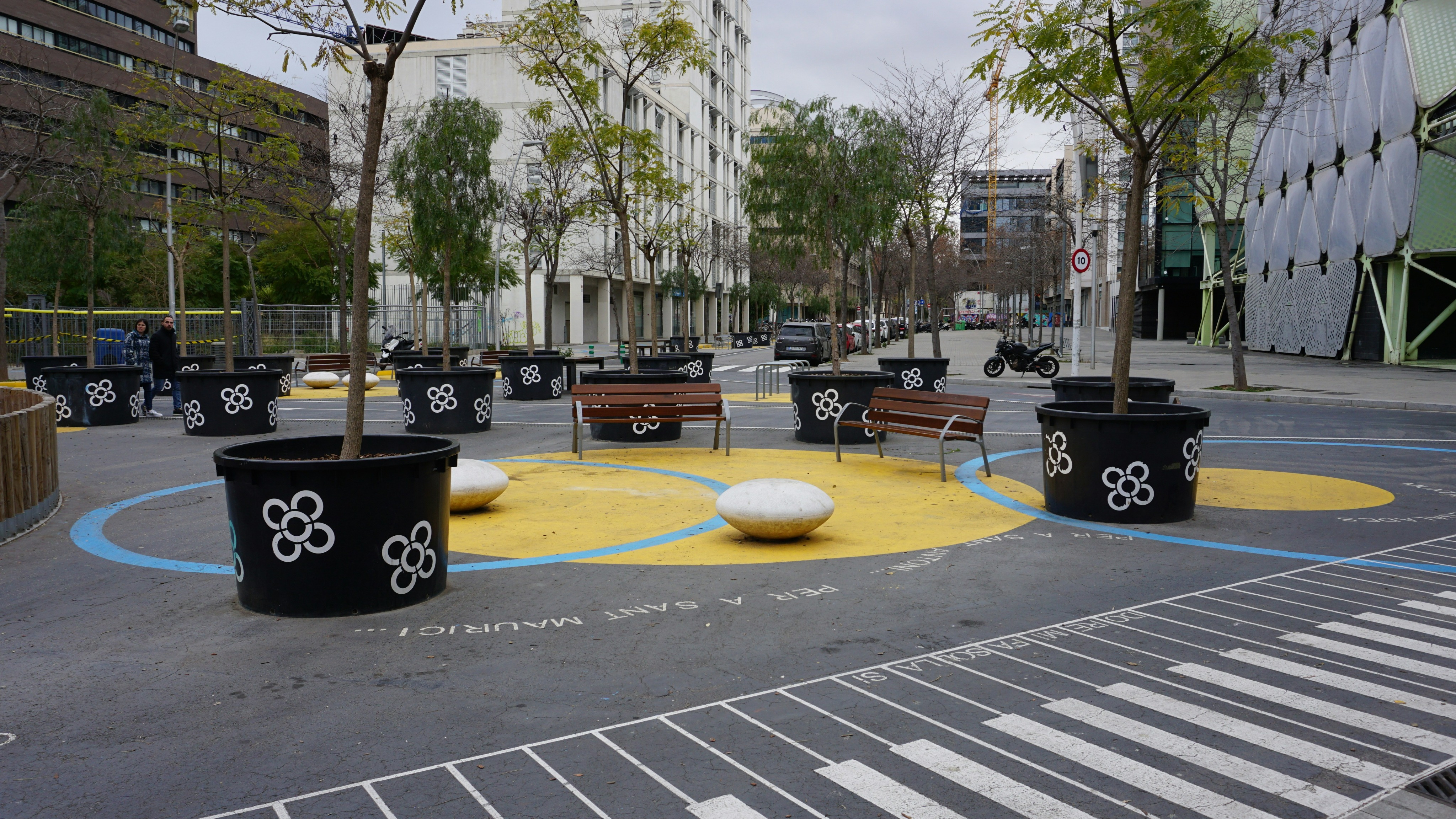
Tactical Urbanism (Source: Marek Lumi_unsplash)
The Challenges of Tactical Urbanism
Of course, not every experiment is a success. Some pop-up bike lanes are removed due to resistance from drivers. Some projects remain temporary because they lack political support. And some ideas, no matter how well-intentioned, face skepticism from residents who worry about gentrification or the loss of parking.
One of the biggest hurdles is convincing policymakers to take temporary interventions seriously. Critics often see Tactical Urbanism as a band-aid solution, rather than a legitimate way to shape long-term urban policy. However, successful examples like Times Square and Paris’ cycling network prove that temporary changes can become permanent improvements when given the right support.
Key Characteristics of Tactical Urbanism:
- Low-cost and Quick to Implement – Uses inexpensive materials and DIY methods.
- Temporary and Flexible – Can be adjusted or removed based on feedback.
- Community-Driven – Encourages local participation in shaping the city.
- Scalable – Can start small but lead to permanent change.
- Experimental – Allows cities to test urban improvements before full-scale implementation.
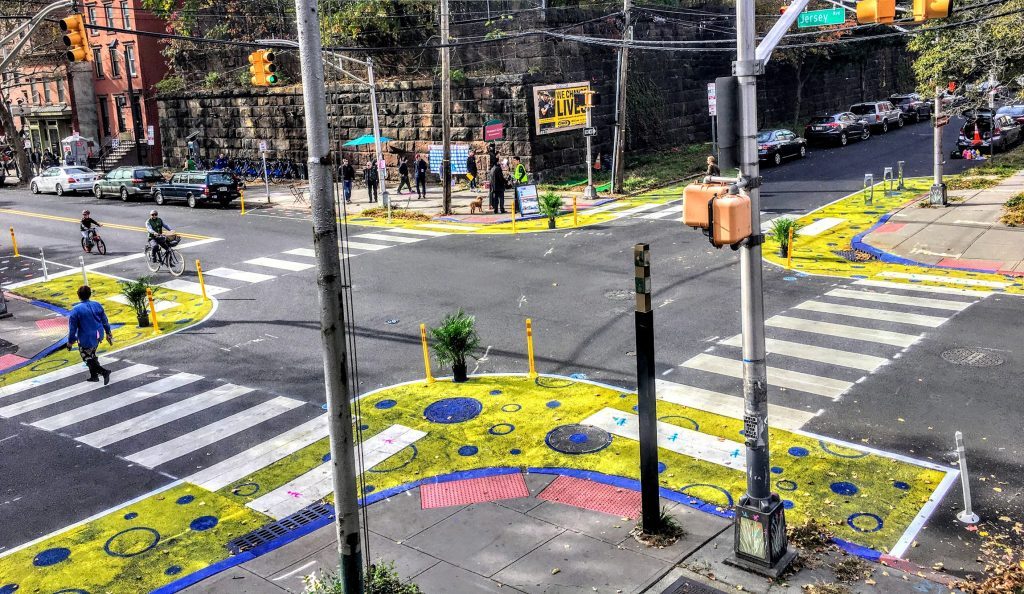
Tactical urbanism - (Source: blog.beopenfuture.com)
Why is Tactical Urbanism Used?
Tactical Urbanism is used as a responsive, adaptive, and inclusive approach to city-making. It addresses urban challenges in a way that traditional planning often cannot.
1. To Test and Demonstrate Ideas Quickly
City governments and designers can experiment with urban improvements before committing resources to permanent infrastructure.
Example: In New York City (2009), planners used Tactical Urbanism to test a pedestrian plaza in Times Square by closing roads with temporary materials. The success of this pilot led to a permanent transformation, making Times Square a world-class public space.
2. To Improve Public Spaces and Walkability
Tactical Urbanism focuses on pedestrian-friendly interventions, creating spaces where people feel comfortable walking, sitting, and socializing.
Example: "Open Streets" in Bogotá, Colombia (Ciclovía) – Every Sunday, hundreds of kilometers of roads are closed to cars and opened to pedestrians and cyclists, transforming the city into an active and community-oriented space.
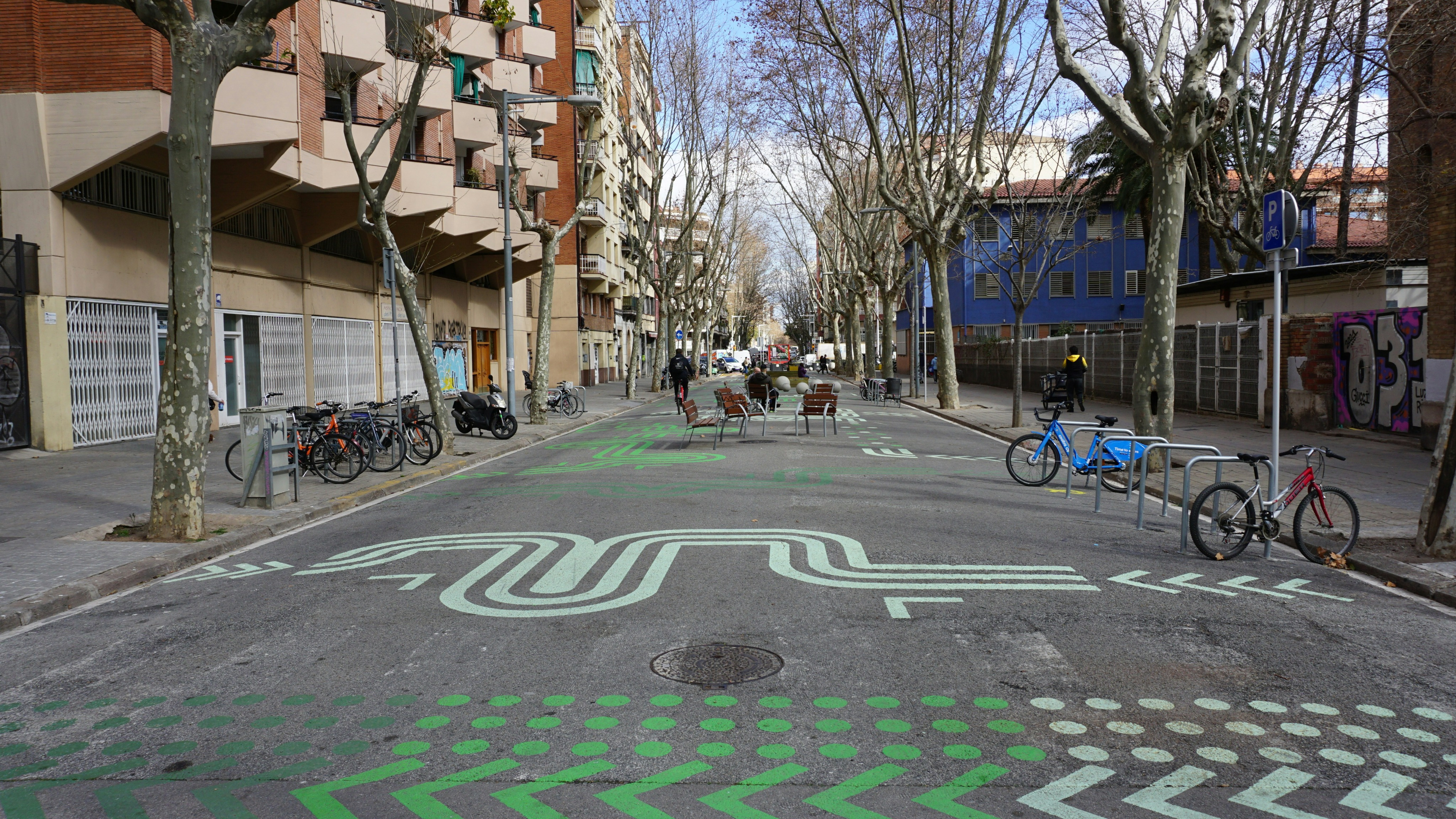
Tactical Urbanism (Source: Marek Lumi_unsplash)
3. To Encourage Community Engagement and Participation
One of the biggest strengths of Tactical Urbanism is its ability to involve local residents in shaping their neighborhoods.
Example: Detroit’s “Better Block” Initiative – Community groups in Detroit have revitalized vacant lots and underused streets with pop-up parks, murals, and markets, bringing life back to struggling areas.
4. To Address Urban Inequality
Tactical Urbanism provides quick improvements to underserved communities, making cities more inclusive.
Example: Lima, Peru’s "Coloring Streets" Project – To combat unsafe, uninviting public spaces, residents and artists painted streets and sidewalks with vibrant designs, reclaiming their neighborhoods and improving pedestrian safety.

Peruvian artist Xomatok - Lima, Peru (Source: mymodernmet.com)
How and Where is Tactical Urbanism Used?
Tactical Urbanism can be applied to a wide range of urban challenges, from transportation improvements to public space activation and placemaking.
1. Traffic and Street Safety Improvements
Pop-up Bike Lanes – Temporary bicycle lanes made with cones, paint, and planters to test safer cycling routes.
Pedestrian Crosswalks – Communities paint crosswalks or install temporary safety measures in dangerous intersections.
"Road Diets" – Temporarily narrowing roads to reduce speeding and improve pedestrian conditions.
Example: Paris' Tactical Bike Lanes (2020 COVID Response) – Paris rapidly created over 60 kilometers of pop-up bike lanes to promote cycling and reduce car dependency. Due to their success, many have become permanent.
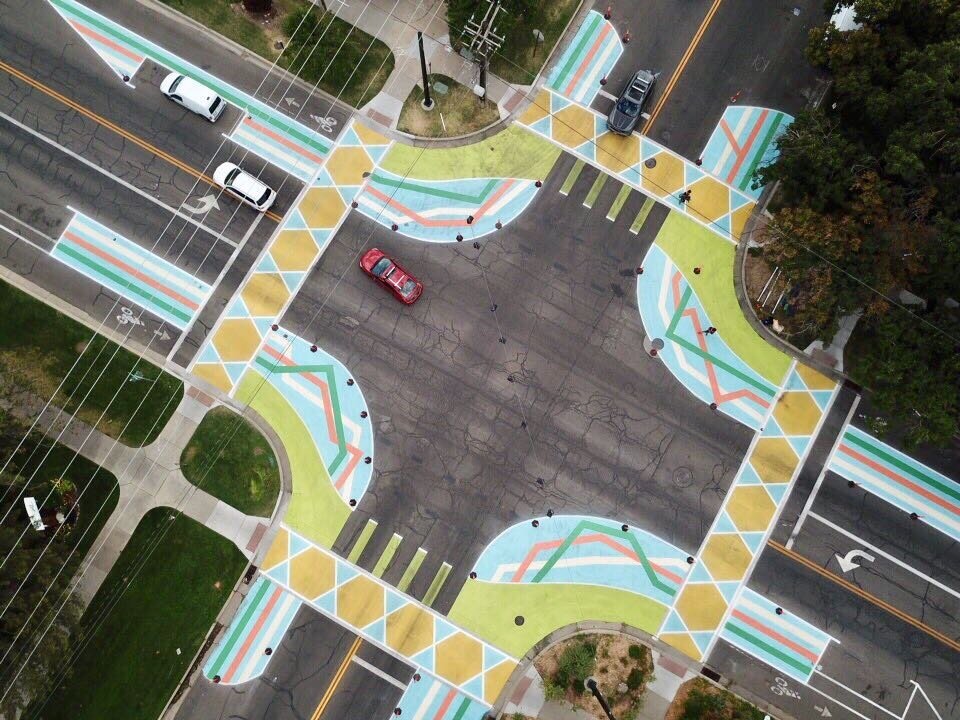
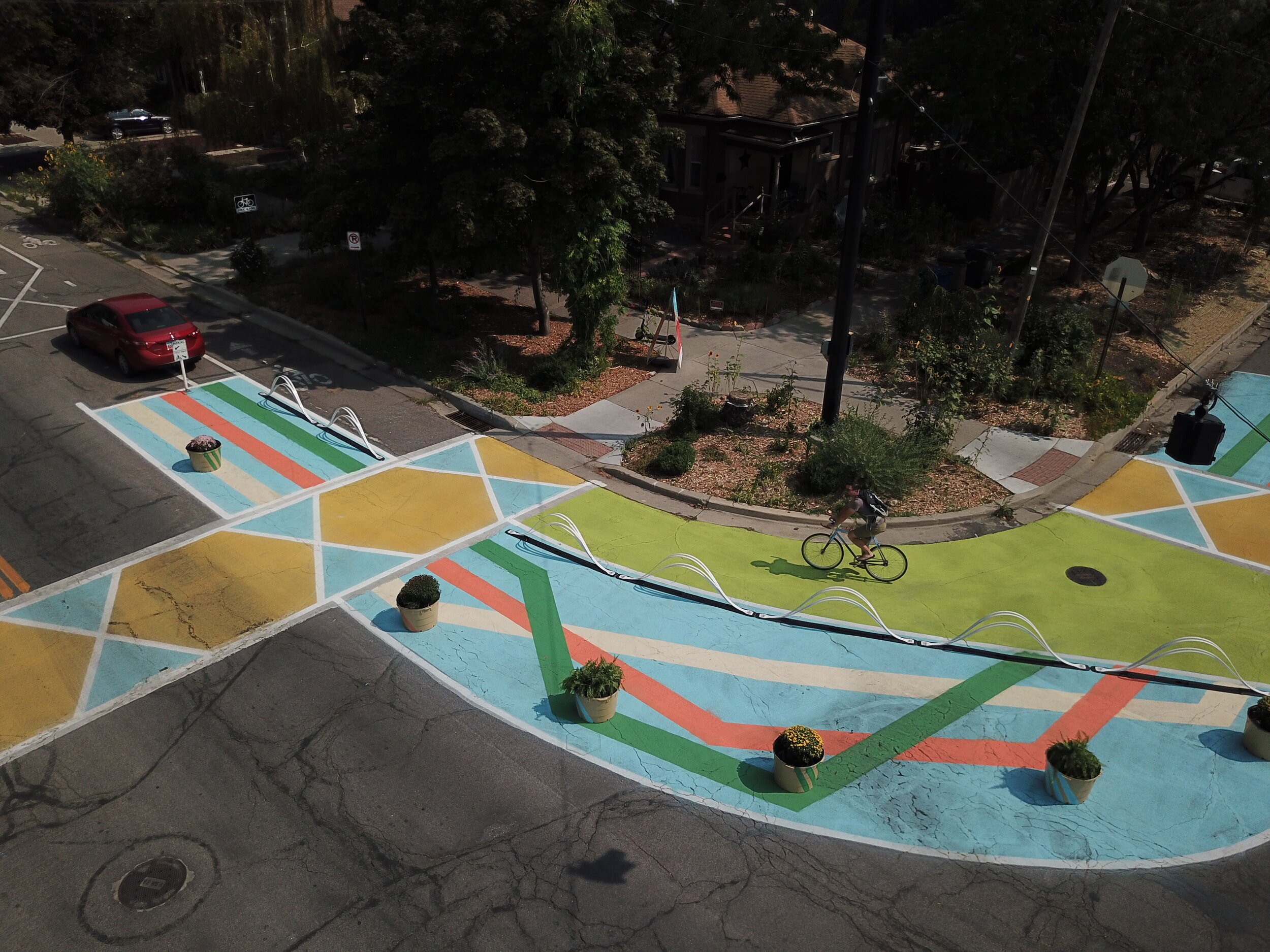
Salt Lake City - Utah (Source: bikeutah.org)
2. Public Space and Placemaking
PARK(ing) Day – Turning parking spaces into mini-parks with benches, trees, and art installations.
Outdoor Seating Areas – Pop-up public spaces with chairs, tables, and greenery to create welcoming gathering spots.
Tactical Placemaking – Painting murals, adding street furniture, or turning empty lots into community gardens.
Example: San Francisco’s "Pavement to Parks" Initiative – Temporary street closures transformed into lively public plazas, encouraging social interaction.
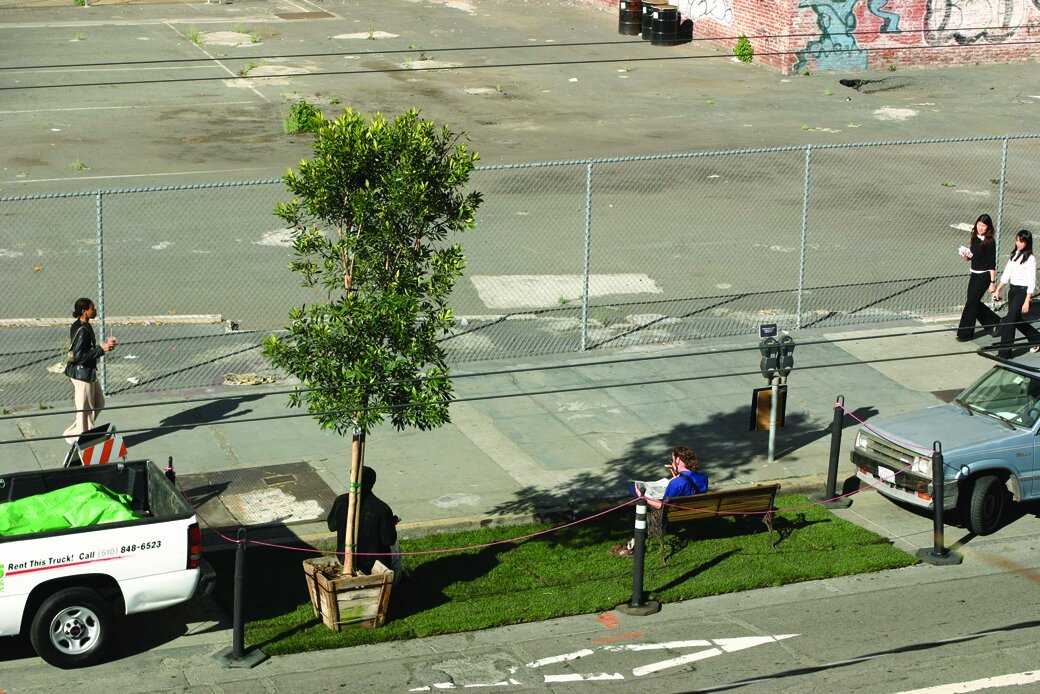
PARK(ing) Day (Source: myparkingday.org)
3. Revitalizing Underutilized Spaces
Vacant Lot Activation – Transforming empty lots into pop-up markets, urban farms, or art spaces.
Temporary Installations – Using abandoned buildings for art exhibits, cultural events, or pop-up businesses.
Example: Philadelphia’s “Porch at 30th Street Station” – A pop-up plaza with seating, food vendors, and entertainment in an unused space, which later became permanent.
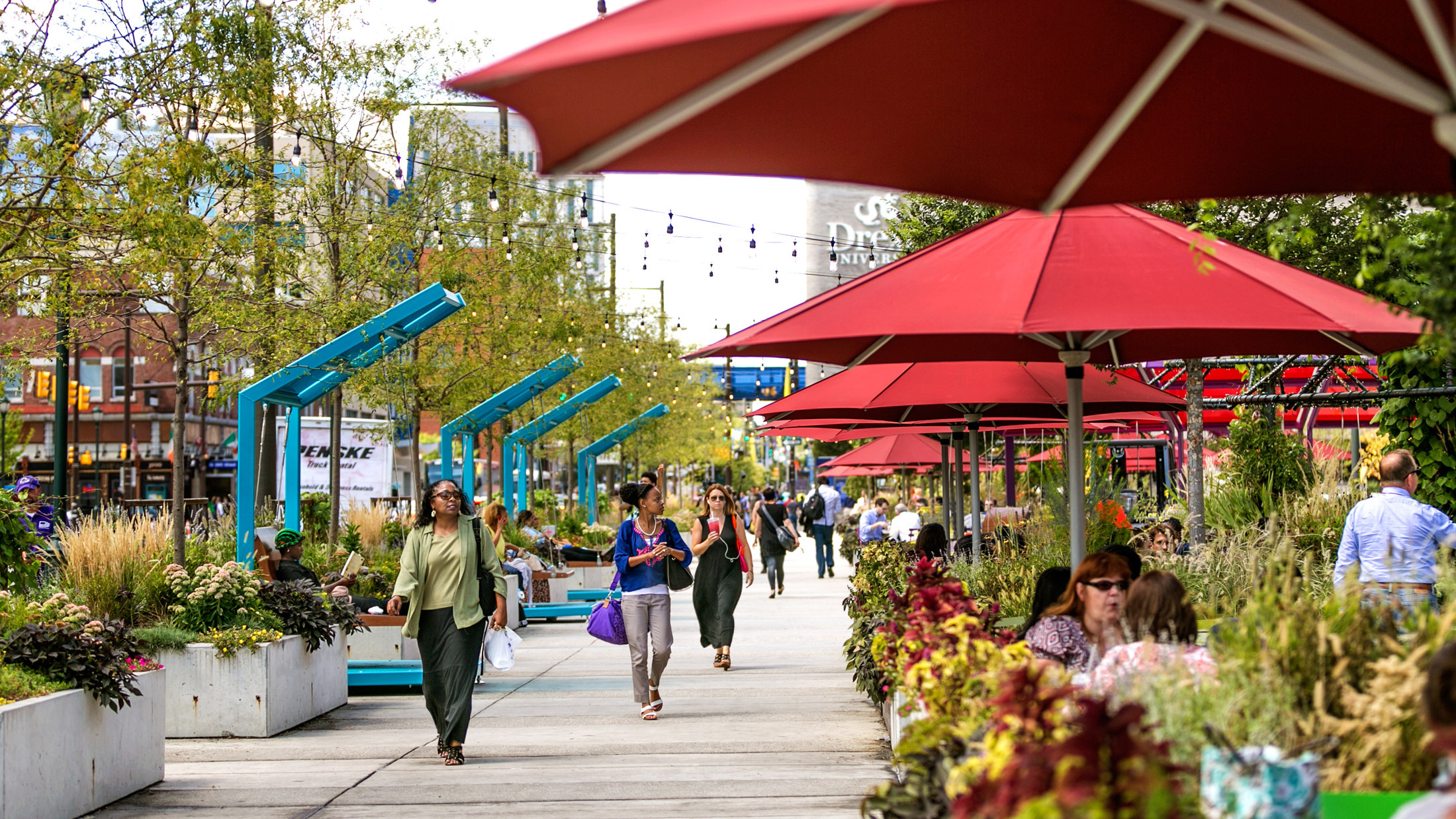
The Porch at 30th Street Station - Philadelphia (Source: Ben Tran for University City District_visitphilly.com)
How Tactical Urbanism is Transforming Cities
Tactical Urbanism is reshaping the urban landscape in several key ways:
Empowering Communities – It gives citizens a voice in urban development, ensuring that changes reflect local needs and desires.
Making Cities More Walkable and Livable – It prioritizes pedestrian and cyclist infrastructure, improving accessibility and safety.
Enhancing Public Spaces – It converts underutilized areas into vibrant, engaging public spaces.
Encouraging Innovation and Experimentation – It allows cities to test new urban design ideas before committing to long-term investments.
Influencing Policy and Planning – When successful, temporary Tactical Urbanism projects can lead to permanent urban improvements.
Example: Times Square, New York City
In 2009, New York City temporarily closed parts of Times Square to car traffic, creating pedestrian plazas with simple materials like paint, folding chairs, and planters. The overwhelmingly positive public response led to a permanent redesign, making Times Square one of the most successful pedestrian zones in the world.
Who Uses Tactical Urbanism?
Tactical Urbanism can be initiated by a variety of stakeholders:
Community Activists – Residents and local organizations pushing for urban change.
City Governments and Planners – Testing new policies before committing to full-scale implementation.
Artists and Designers – Creating engaging public spaces and cultural interventions.
Cycling and Pedestrian Advocates – Improving street safety and mobility.
Business Owners – Enhancing commercial areas with better streetscapes and seating areas.
Principles of Tactical Urbanism
Tactical Urbanism operates on four key principles that define its approach to urban transformation:
1. Community Engagement and Collaboration
At its core, Tactical Urbanism prioritizes community participation. It empowers local residents, business owners, and organizations to take an active role in shaping their urban environment.
Example: In Mexico City, local organizations and residents worked together to transform abandoned lots into community gardens, fostering social interaction and ecological sustainability.
2. Incremental Change
Rather than attempting large-scale transformations all at once, Tactical Urbanism advocates for gradual, step-by-step improvements. Small interventions can test ideas, build public support, and lead to larger urban improvements over time.
Example: San Francisco’s Market Street Prototyping Festival tested temporary urban design concepts along Market Street, helping planners refine ideas before committing to major redesigns.
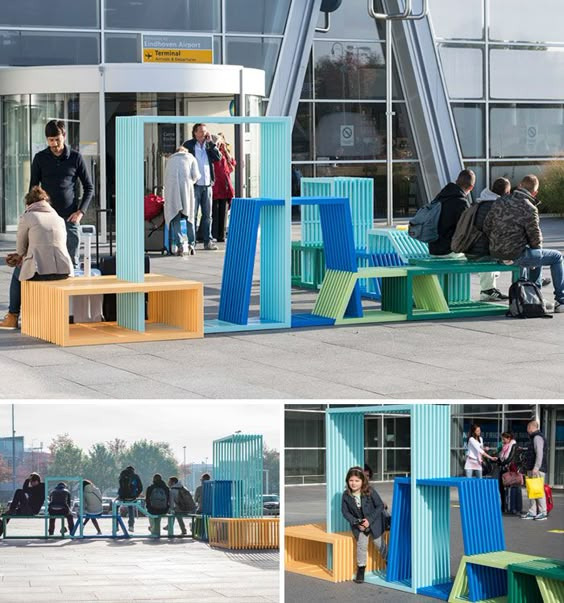
Izabela Bołoz's Intersections modules interlock to form street furniture (Source: urbandesignlab.in)
3. Low-Cost and Temporary Interventions
Tactical Urbanism thrives on affordable, adaptable, and easily implemented solutions. By using paint, planters, seating, and temporary structures, cities can quickly test changes before making long-term investments.
Example: Guerrilla bike lanes in Los Angeles—activists used temporary paint and cones to create bike lanes, demonstrating their demand and effectiveness before city officials made them permanent.
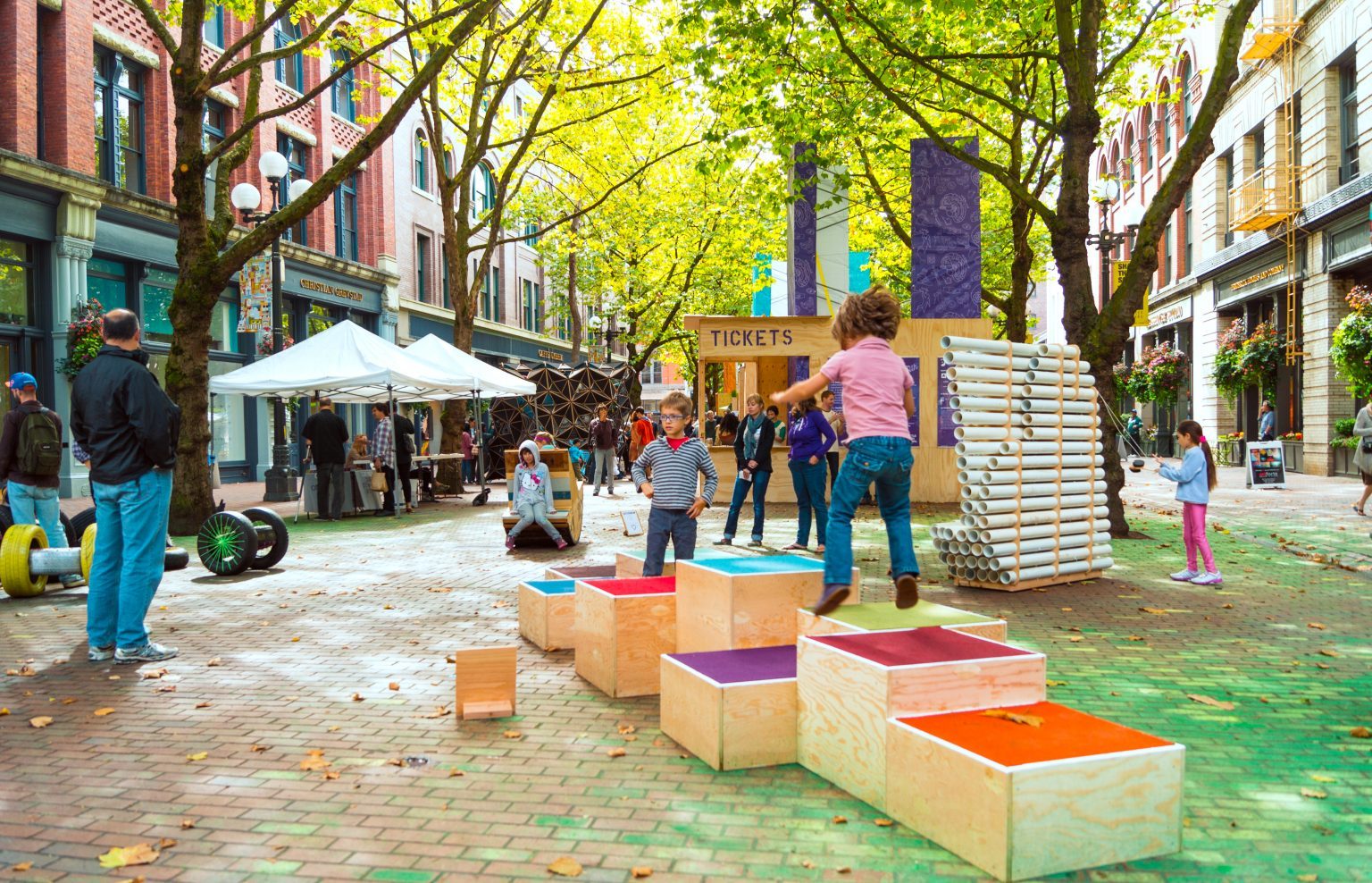
Seattle Design Festival (Source: Trevor Dykstra via flickr, CC BY-NC-SA 2.0)
4. Testing Ideas
Cities often struggle with rigid bureaucratic planning. Tactical Urbanism allows for real-world testing of ideas, providing valuable insights on what works before committing to expensive projects.
Example: Copenhagen’s pop-up bike lanes allowed the city to assess traffic patterns before investing in a city-wide cycling network.
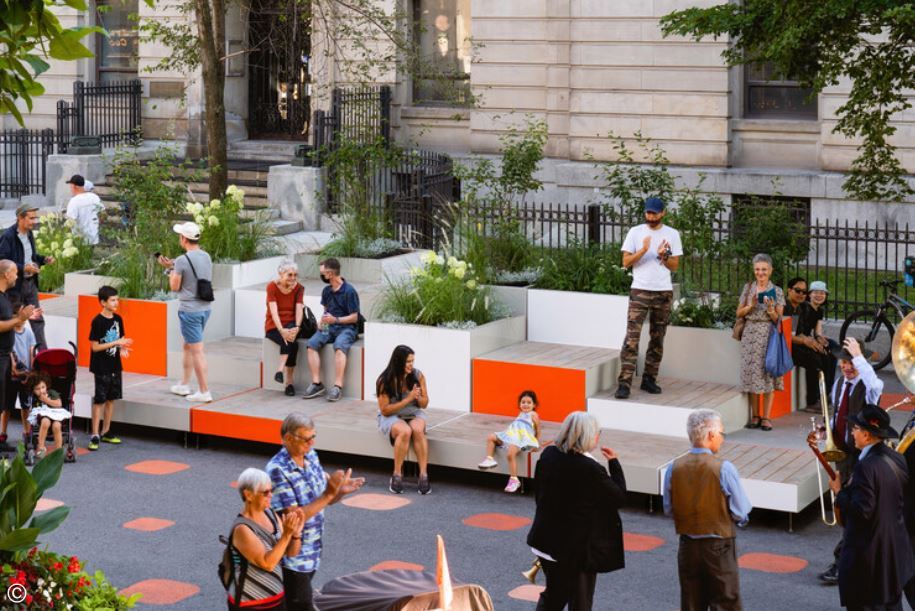
Montreal (Source: Raphaël Thibodeau_archdaily.com)
Benefits of Tactical Urbanism
Tactical Urbanism offers numerous advantages, making cities more adaptable, inclusive, and engaging.
1. Community Engagement
Encourages citizens to actively participate in urban improvements.
Strengthens community ties and promotes local identity.
Creates spaces designed for and by the people who use them.
2. Rapid Experimentation
Tests ideas in real-world conditions before committing to long-term solutions.
Allows cities to respond quickly to urban challenges.
Demonstrates the feasibility and effectiveness of interventions.
3. Iterative Design
Allows projects to evolve based on feedback.
Provides an opportunity to refine urban solutions over time.
Encourages flexibility and innovation in urban planning.
4. Safe Space for Innovation
Tactical Urbanism encourages risk-taking by allowing low-cost experimentation.
It challenges conventional urban planning methods without significant financial investment.
5. Policy and Perception Change
Helps shift public perception towards pedestrian-friendly and people-centered cities.
Demonstrates the effectiveness of changes, influencing policy decisions and long-term urban planning.
Practical Applications of Tactical Urbanism
Tactical Urbanism is applied in various ways, with projects ranging from simple street enhancements to large-scale urban interventions.
1. Parklet Installations
Converts parking spaces into mini-parks with seating, plants, and public art.
Example: San Francisco’s Parklet Program repurposed parking spaces to create small public spaces for pedestrians.
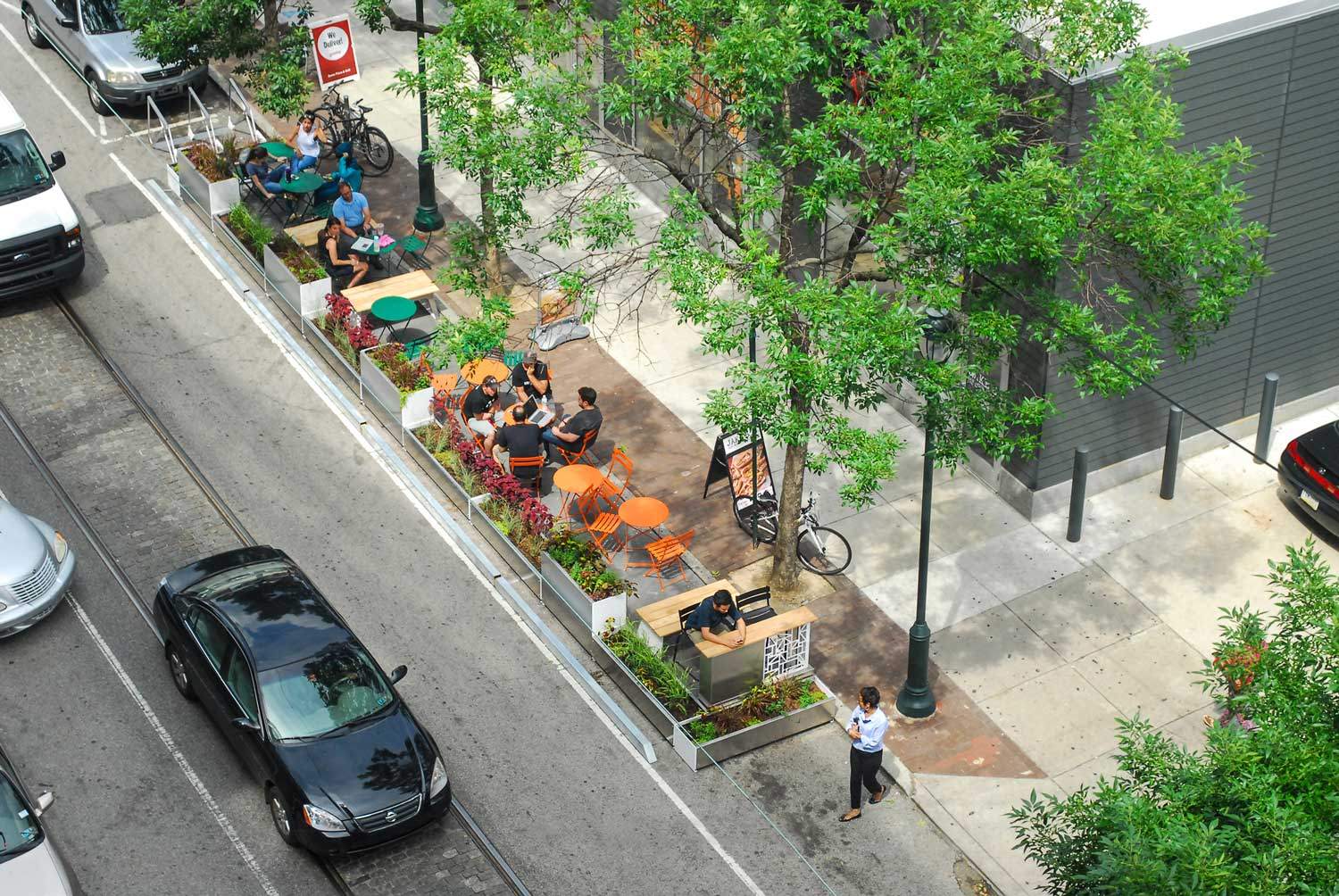
Parklets (Source: Tim Barnes, www.shiftspacedesign.com)
2. Pop-up Markets
Activates underutilized spaces by creating temporary street markets.
Example: Detroit’s Eastern Market pop-up initiative helped revitalize neglected urban areas through short-term commercial activities.
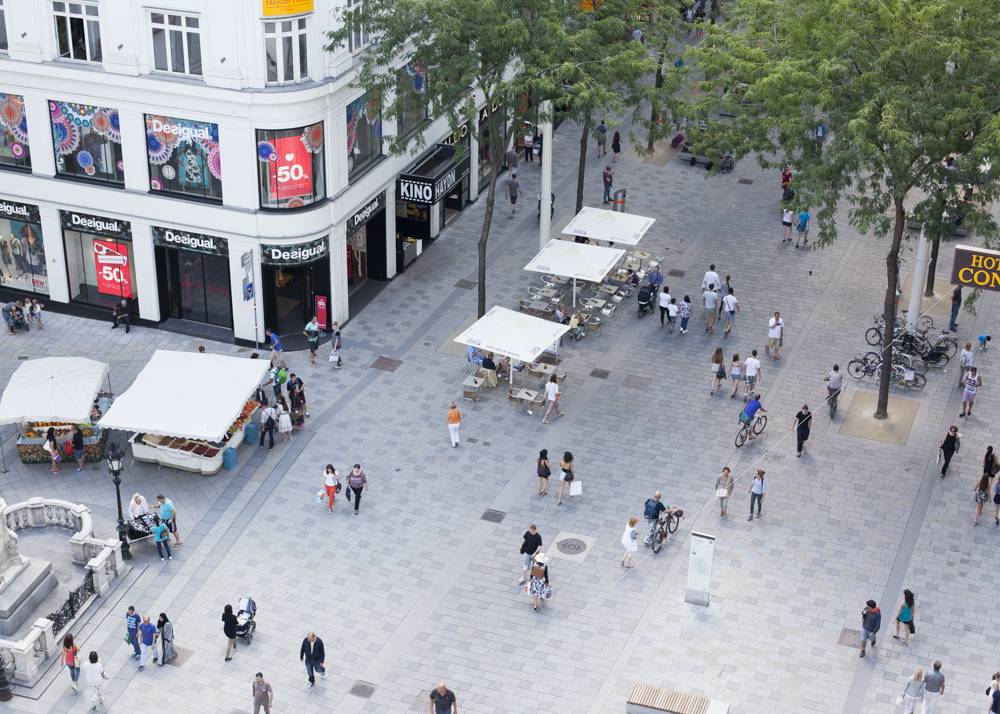
Temporary pop-up markets and street fairs (Source: urbandesignlab.in)
3. Bike Lanes and Pedestrian Walkways
Uses temporary paint, bollards, and cones to create safer bike lanes and pedestrian-friendly streets.
Example: Paris’ COVID-19 bike lane expansions were initially temporary but became permanent due to public demand.
4. Outdoor Art Installations
Murals, street art, and sculptures transform dull urban areas into vibrant, engaging spaces.
Example: Buenos Aires’ urban art initiative turned streets into outdoor galleries, making public spaces more inviting.
Campos Jesses' Frida Kahlo - Palermo neighbourhood - Buenos Aires (Source: turismo.buenosaires.gob.ar)
5. Intersection Makeovers
Uses paint, planters, and curb extensions to improve pedestrian safety at busy intersections.
Example: New York City’s pedestrian plaza at Herald Square improved safety and walkability.
Challenges of Tactical Urbanism
Despite its many benefits, Tactical Urbanism faces several challenges that can hinder its effectiveness.
1. Lack of Long-Term Sustainability
Temporary interventions may not receive funding or support for permanent implementation.
Example: Some pop-up bike lanes disappear due to lack of political commitment.
2. Perception of Inadequacy
Some view Tactical Urbanism projects as "cheap" or "unprofessional."
Example: Residents may resist temporary street redesigns, fearing negative economic impacts.
3. Limited Impact on Policy Change
While Tactical Urbanism can influence policy, it often lacks legal backing to enforce permanent change.
4. Resistance from Stakeholders
Business owners and drivers may oppose pedestrian-focused projects due to concerns about parking and traffic.
5. Lack of Integration with City Planning
Some Tactical Urbanism projects remain isolated interventions, rather than being integrated into broader urban planning efforts.
Conclusion: Tactical Urbanism as a Tool for Change
Tactical Urbanism is a powerful and adaptable tool that allows cities and communities to experiment with urban improvements before making costly, permanent changes. It fosters innovation, public participation, and fast transformation, making cities more vibrant, inclusive, and people-friendly.
By focusing on small-scale interventions with big impacts, Tactical Urbanism demonstrates that urban change doesn’t have to be slow, bureaucratic, or expensive. It shows that big changes can start with small actions, reinforcing the idea that cities should be made for people, not just cars and infrastructure.
It is a reminder that everyone has a role in shaping the city, and sometimes, a single street mural, pop-up plaza, or temporary bike lane can spark a movement that redefines the urban landscape for generations.
As more cities embrace Tactical Urbanism, we move closer to a future where urban spaces are dynamic, inclusive, and constantly evolving to meet the needs of their residents.
Featured Posts
Blog Topics
Urban environment & Public spaces
Stay updated with the latest articles and insights from The Landscape Lab. Here, you will find valuable information and engaging content.
Waterfront & Coastal Resilience
Stay updated with the latest articles and insights from The Landscape Lab. Here, you will find valuable information and engaging content.
Captivating Photography
Stay updated with the latest articles and insights from The Landscape Lab. Here, you will find valuable information and engaging content.
Why Read The Landscape Lab Blog?
The way we design and interact with landscapes is more important than ever. As cities expand, coastlines shift, and climate change reshapes our world, the choices we make about land, water, and urban spaces have lasting impacts. The Landscape Lab Blog is here to spark fresh conversations, challenge conventional thinking, and inspire new approaches to sustainable and resilient design.
If you’re a landscape architect, urban planner, environmentalist, or simply someone who cares about how our surroundings shape our lives, this blog offers insights that matter. We explore the intersections between nature and the built environment, diving into real-world examples of cities adapting to rising sea levels, innovative waterfront designs, and the revival of native ecosystems. We look at how landscapes can work with nature rather than against it, ensuring long-term sustainability and biodiversity.
By reading The Landscape Lab, you'll gain a deeper understanding of the evolving field of landscape design—from rewilding initiatives to regenerative urban planning. Whether it’s uncovering the forgotten history of resilient landscapes, analyzing groundbreaking projects, or discussing the future of green infrastructure, this blog provides a space for learning, inspiration, and meaningful dialogue.
Location:
The Landscape Lab
123 Greenway Drive
Garden City
NY 12345
United Kingdom
Contact Number:
Get in Touch:
contact@thelandscapelab.co.uk
© 2025 thelandscapelab.co.uk - Your go-to blog for landscaping insights

